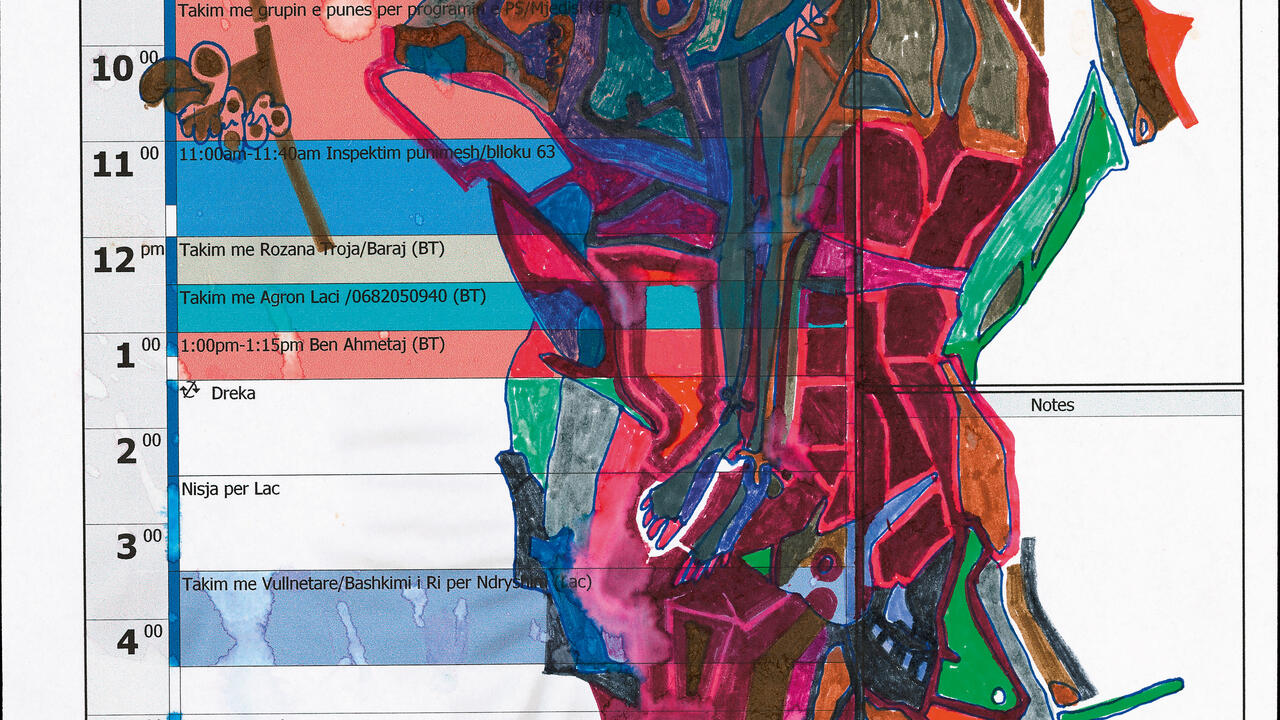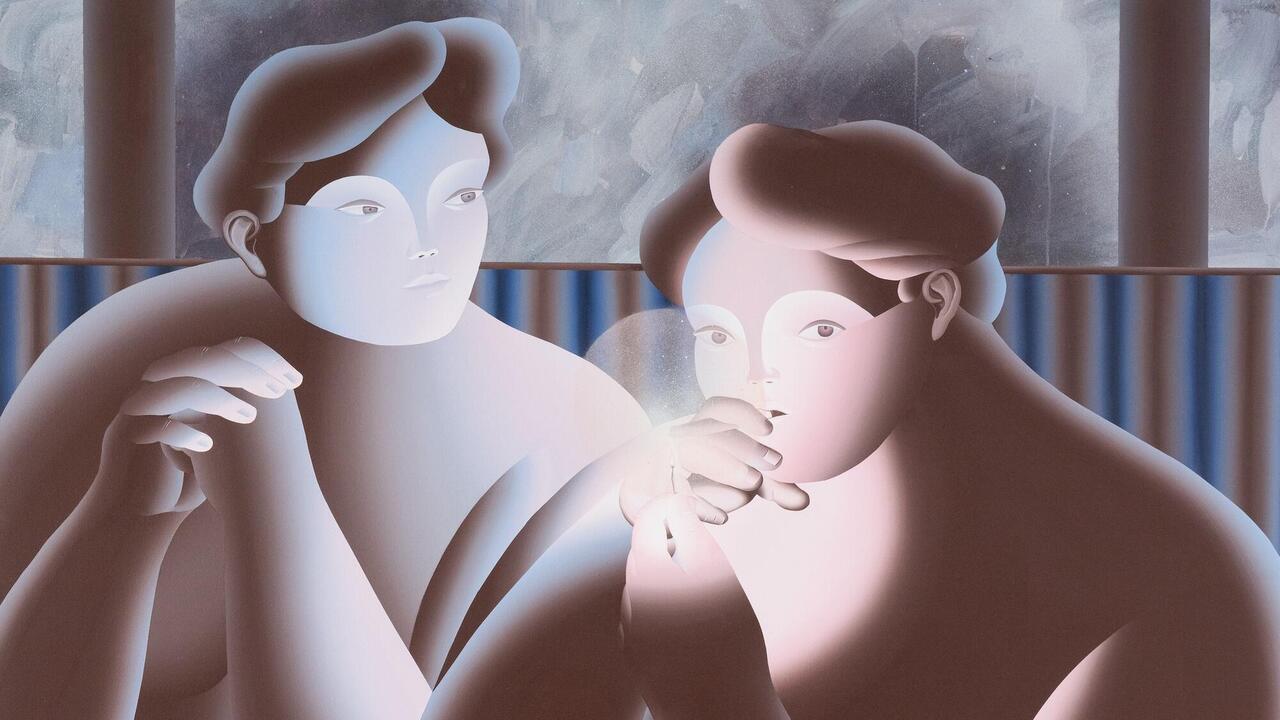50th Venice Biennale
Various Venues
Various Venues
The 50th Venice Biennale started out with a good idea. Its Director, curator Francesco Bonami, devised a plan for avoiding the unwieldy thematic structures and conceptual sloppiness that generally distinguish these exhibitions. Rather than present a single massive exhibition, he divided his Biennale into a series of ten semi-autonomous sections, generously handing over curatorial authority for most of them to an array of hand-picked colleagues. Essentially organized as separate projects, these sections would - in theory, at least - combine to provide an expansive overview of current situations in contemporary art. At the same time they would (presumably) substitute more focused and more manageably scaled exhibitions for the disjointed sprawl of a mega-show. Bonami made another promising move by including on his curatorial team two artists, Gabriel Orozco and Rirkrit Tiravanija. Their participation seemingly promised a more artist-centred enterprise.
Yet despite these changes, this year's model was ultimately another typical example of the genre, noteworthy principally for its abundant supply of uninspiring (and often poorly installed) art. In retrospect, Bonami's inane and confusing exhibition title, 'Dreams and Conflicts: The Dictatorship of the Viewer', was a portent of things to come. The phrase 'dictatorship of the viewer' was not meant to be ironic, but it proved to be: the only dictatorial attitudes accommodated by this Biennale were those of its curators.
The most heavy-handed curatorial touch belonged to Molly Nesbit, Hans Ulrich Obrist and Rirkrit Tiravanija, whose 'Utopia Station' section crowded the work of over 160 artists into a cluttered lounge-like environment, replete with the obligatory computer stations and clubhouse ambience. In this version of Utopia art was given short shrift: most of the works were lost amid the deliberate muddle and disorder of the installation, which called to mind a fifth-rate Thomas Hirschhorn exhibition. The curators' implicit equation of chaos and energy, anarchy and liberation, was a tired trope from the 1960s; it made for an installation that was enervating and indulgent, and which did a disservice to artists and viewers alike.
This year's Biennale deployed a familiar rhetoric of emergency while purporting to grapple with global problems.
Like recent editions of Manifesta and Documenta, this year's Biennale deployed a familiar rhetoric of emergency while purporting to grapple with global problems. But where Carlos Basualdo's 'Structures of Survival' section maintained a fairly sober tone in surveying works related to architecture and urbanism, Hou Hanru's 'Zone of Urgency' seemed more like a spectacular funhouse. Boasting an installation design that suggested a deconstructed multiplex, Hanru's exhibition forced visitors to wander across a series of platforms, ramps, bridges and staircases to survey a densely packed array of art. Fortunately little of the work on display was subtle enough to suffer from this obtrusive curatorial conceit, which according to Hanru represents a response to our changing information landscape. Yet there was little really new here: instead, Hanru's efforts to replicate in an exhibition venue the clamour and messiness of everyday life merely echoed ideas for which Allan Kaprow argued almost 40 years ago. (Robert Smithson, on the other hand, maintained that one of the museum's chief virtues was precisely that it nullifies action.)
To his credit, Hanru's selections often displayed a welcome sense of humour (missing in most of this Biennale) as they dished out political barbs. Visually punchy video installations by Yang Zhenzhong and Chen Shaoxiong proposed fantastical solutions for urban congestion and urban terrorism, while Tadasu Takamine's eccentric live action/claymation video presented a monstrously ironic and butchered version of 'America the Beautiful' (1913).
Considerable wit, albeit of a more elegant variety, was also on display in the section curated by Orozco. Entitled 'The Everyday Altered', this modest contribution (only six artists were included) was the sole part of the Biennale that actually functioned as a cohesive exhibition and offered viewers a sense of freedom in approaching the generously spaced works. Fernando Ortega's electric bug zapper, which momentarily short-circuited the house lights every time it killed an insect, and Damián Ortega's diagram-like sculpture of a dismantled and suspended Volkswagen Beetle set the tone for Orozco's canny gathering of conceptually driven works that remixed quotidian materials.
Curatorial coherence was the exception to the rule, however. Even in the weak section devoted to African art, and in Catherine David's dull 'Contemporary Arab Representations', there were no clear thematic or aesthetic threads connecting the disparate works. As if by default, these and several other sections of the Biennale (including Hanru's) settled for lamely grouping art by region or ethnicity. The most puzzlingly shapeless component, however, was without doubt Bonami's 'Clandestine' section - the title seemingly referring to the show's invisible premise, which evidently remained hidden even from its curator.
For the Italian Pavilion - the glamour site of the Biennale - Bonami and co-curator Daniel Birnbaum presented an exhibition organized around a thought-provoking and challenging question: do aesthetic evolutions proceed in a non-linear fashion? Given the prevalence of revivals, returns and historical repetitions in recent art, this is indeed a timely moment to re-interrogate notions of the 'contemporary'. Yet Birnbaum and Bonami's 'Delays and Revolutions' section was hamstrung by unconvincing selections, including over-produced and underwhelming contributions by artists such as Matthew Barney and Damien Hirst, as well as an arbitrary mélange of historical works by the likes of Dan Graham, Carol Rama and Andy Warhol. Sadly enough, the latter's 1965 projection piece Inner and Outer Space was the freshest work in the exhibition - a point that, rather than highlighting the curators' premise, merely reflected the slackness and mannered ambitions that characterized so much of the art on hand.
Conspicuously absent from the Biennale was a range of artworks that invited a sense of wonder or discovery, or that welcomed and rewarded the visitor's responsiveness. Far too often the curators favoured approaches that seemed biased towards forms of attention deficit disorder, making it difficult even to notice quieter works such as Koo Jeong-a's stunningly subtle installation of tiny diamond chips embedded in one of the Arsenale's rough stone walls. Also noticeably missing was even a pretence of self-criticality, as though the curators assumed they already had all the right answers to the problems posed by large biennials. (That task was taken up, however, by a few exhibits in the national pavilions, particularly the biting and humorous installations by New Zealand's Michael Stevenson and Spain's Santiago Sierra.)
Taken as a whole, it was an acutely unsatisfying Biennale. Hung above the entrance to the Italian Pavilion, Sam Durant's lightboxed reprisal of a 1960s protest sign, Like, Man, I'm Tired (of Waiting) (2002), summed up the disappointment one felt on leaving. But you have to wonder, at this point, whether it is even possible to organize a provocative, thrilling, joyous, challenging Biennale - or if there is something inherent in this enterprise (perhaps a corrosive grandiosity of purpose?) that inevitably leads to dismal results. One small starting-point might be to lighten up as well as to simplify. The Biennale isn't a roadmap for world peace or a cure for cancer; it's a display of artworks, and its curators need to find ways of more intelligently engaging the audiences for this work who, far from being dictators, are collaborators in this elaborate cultural ritual of exhibition-making.




















